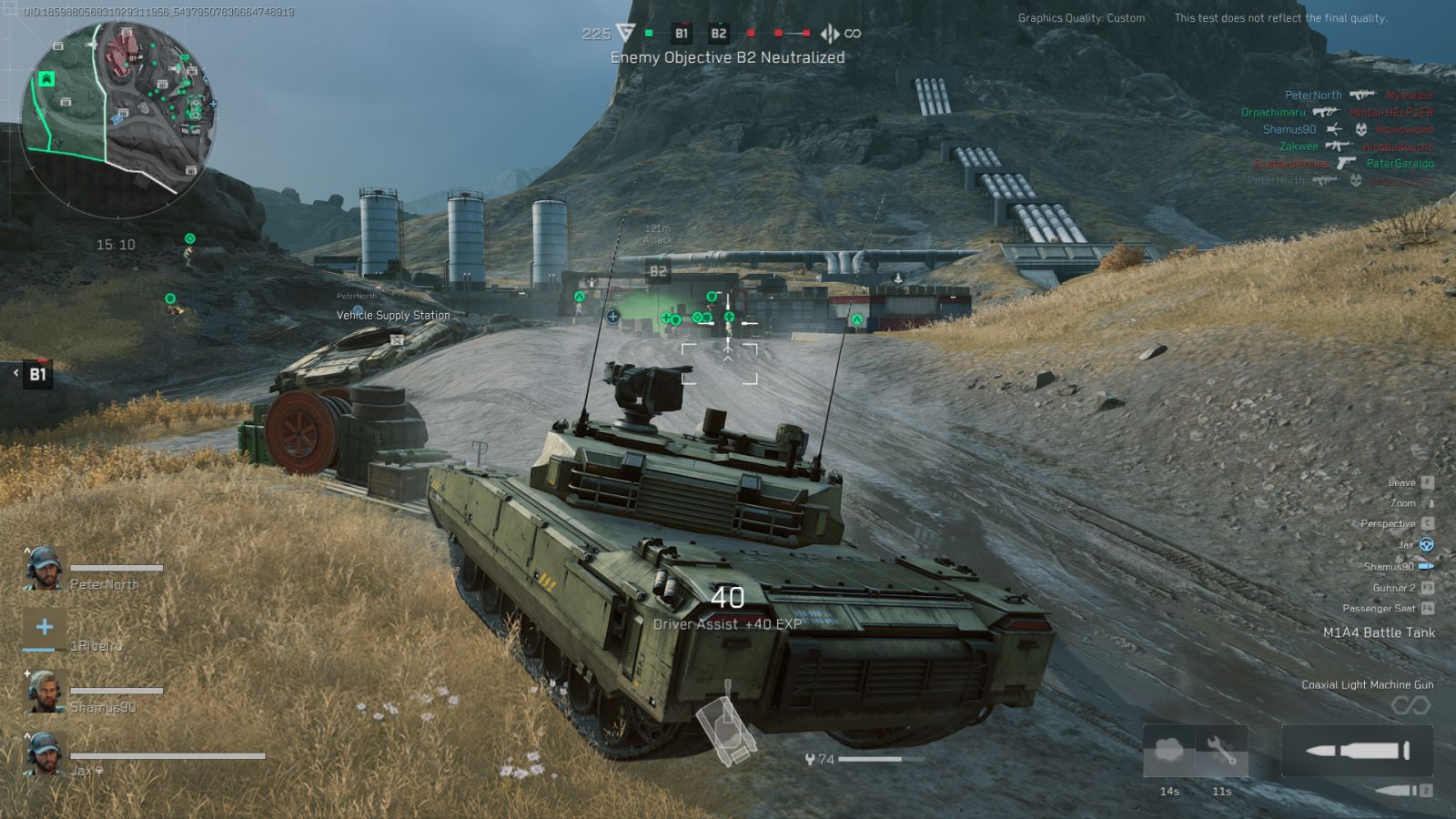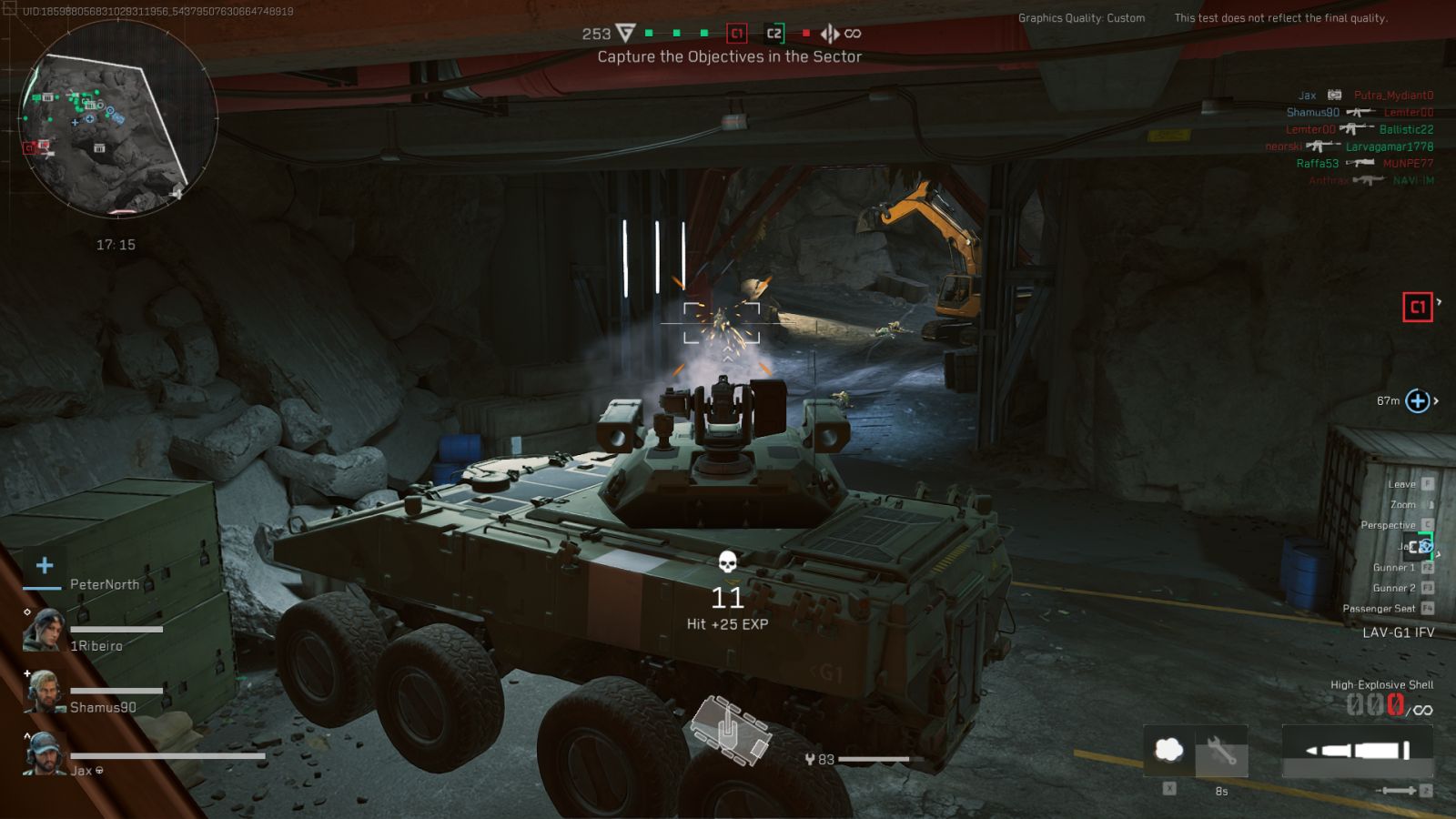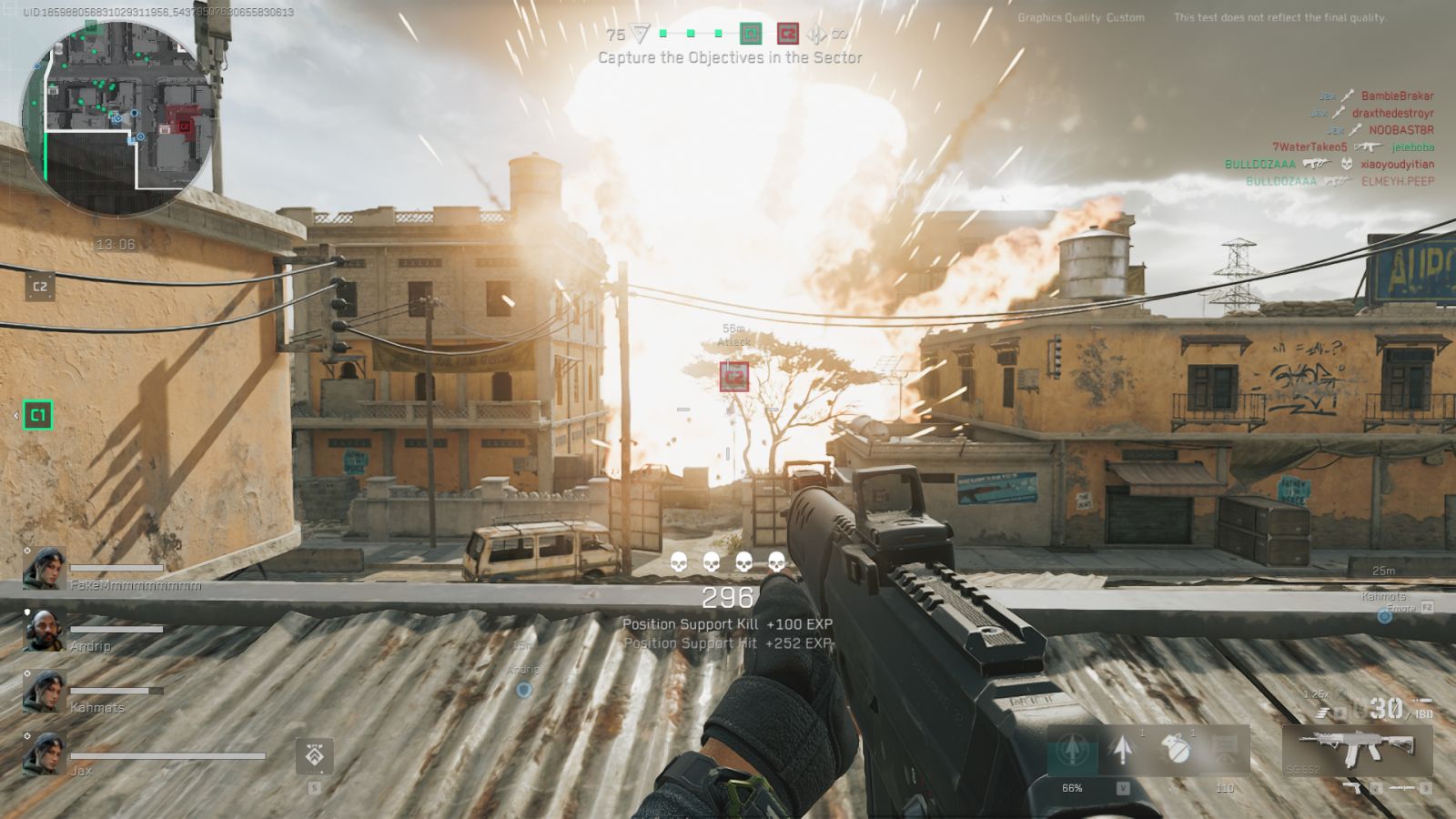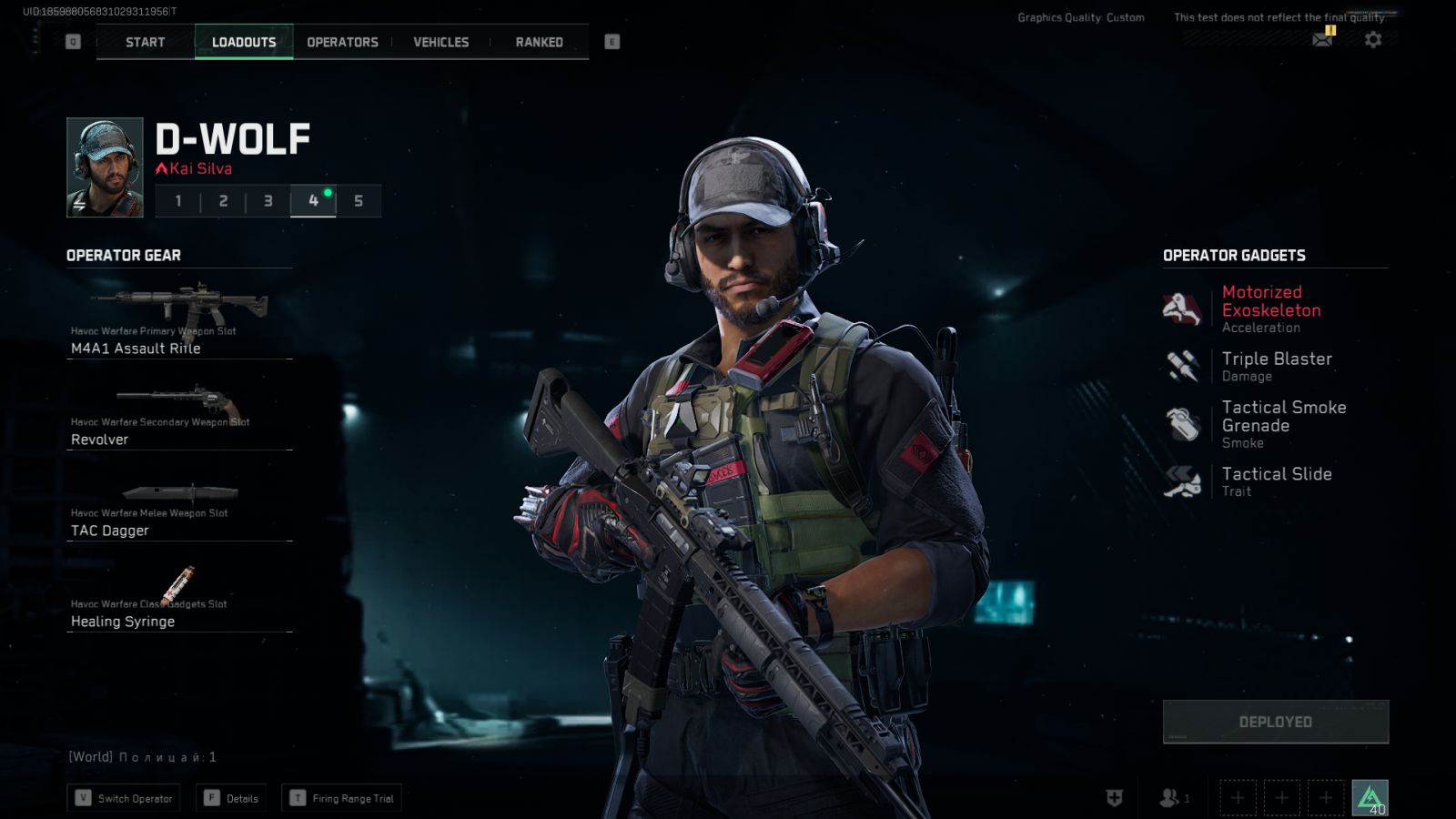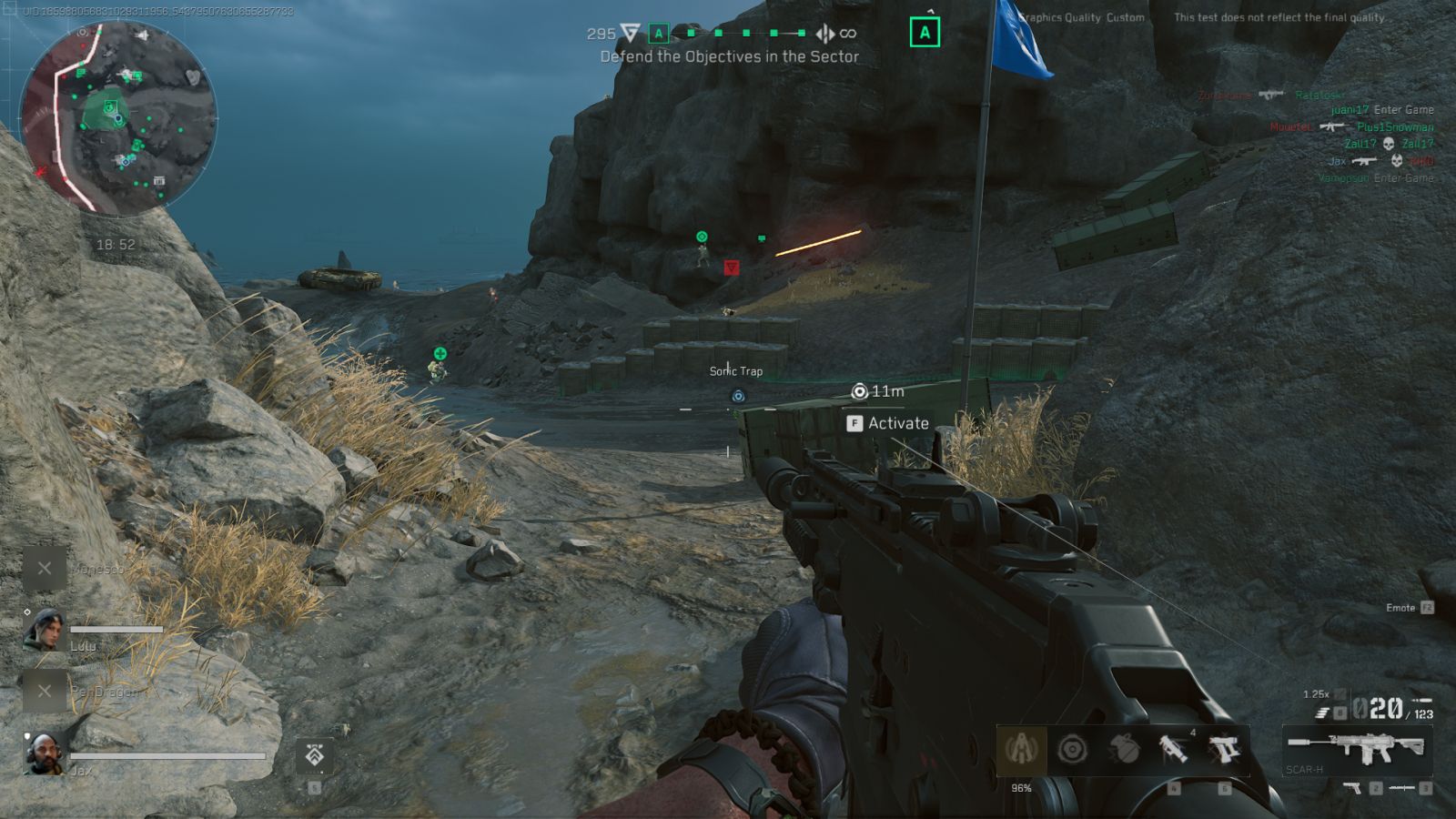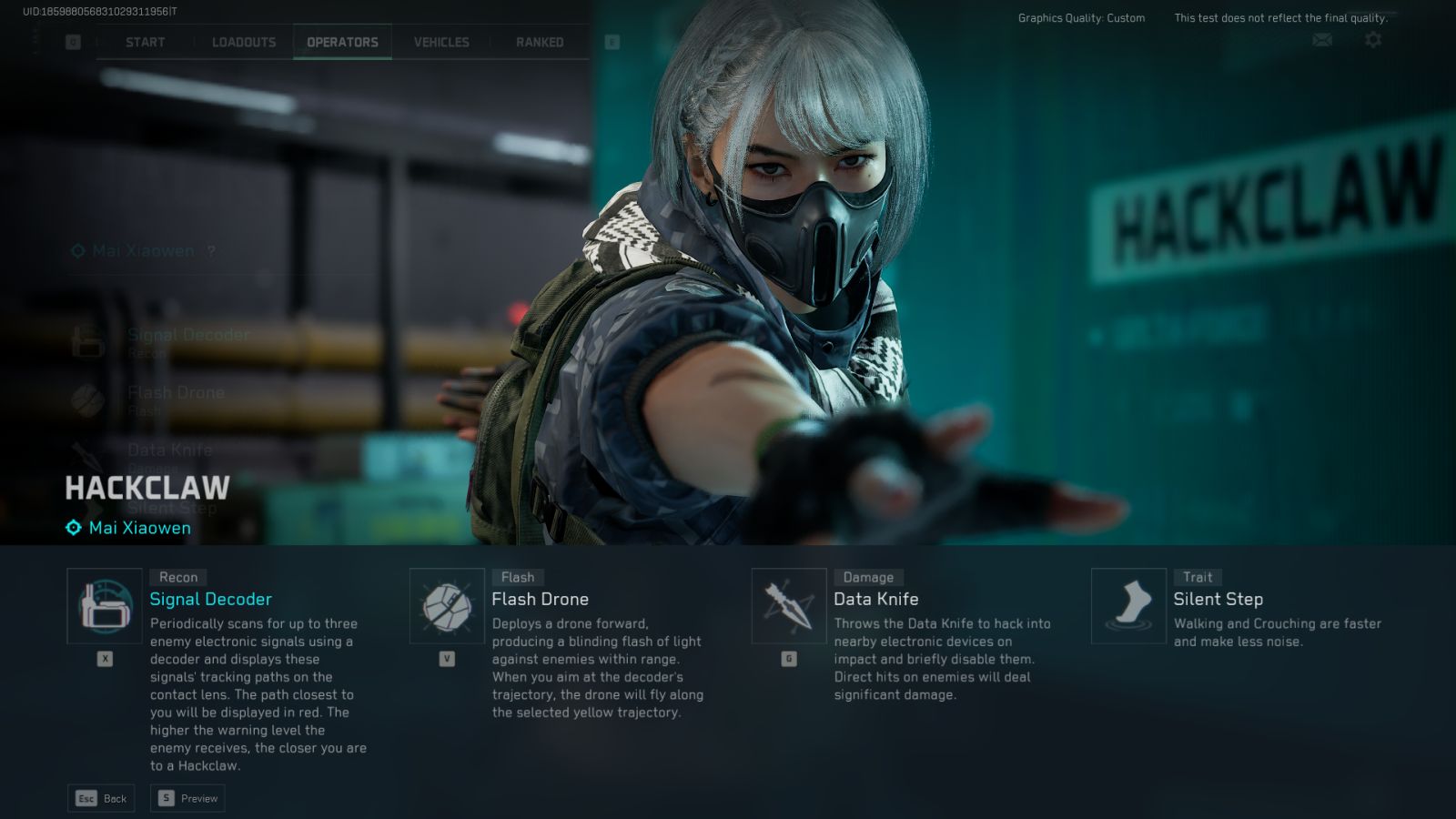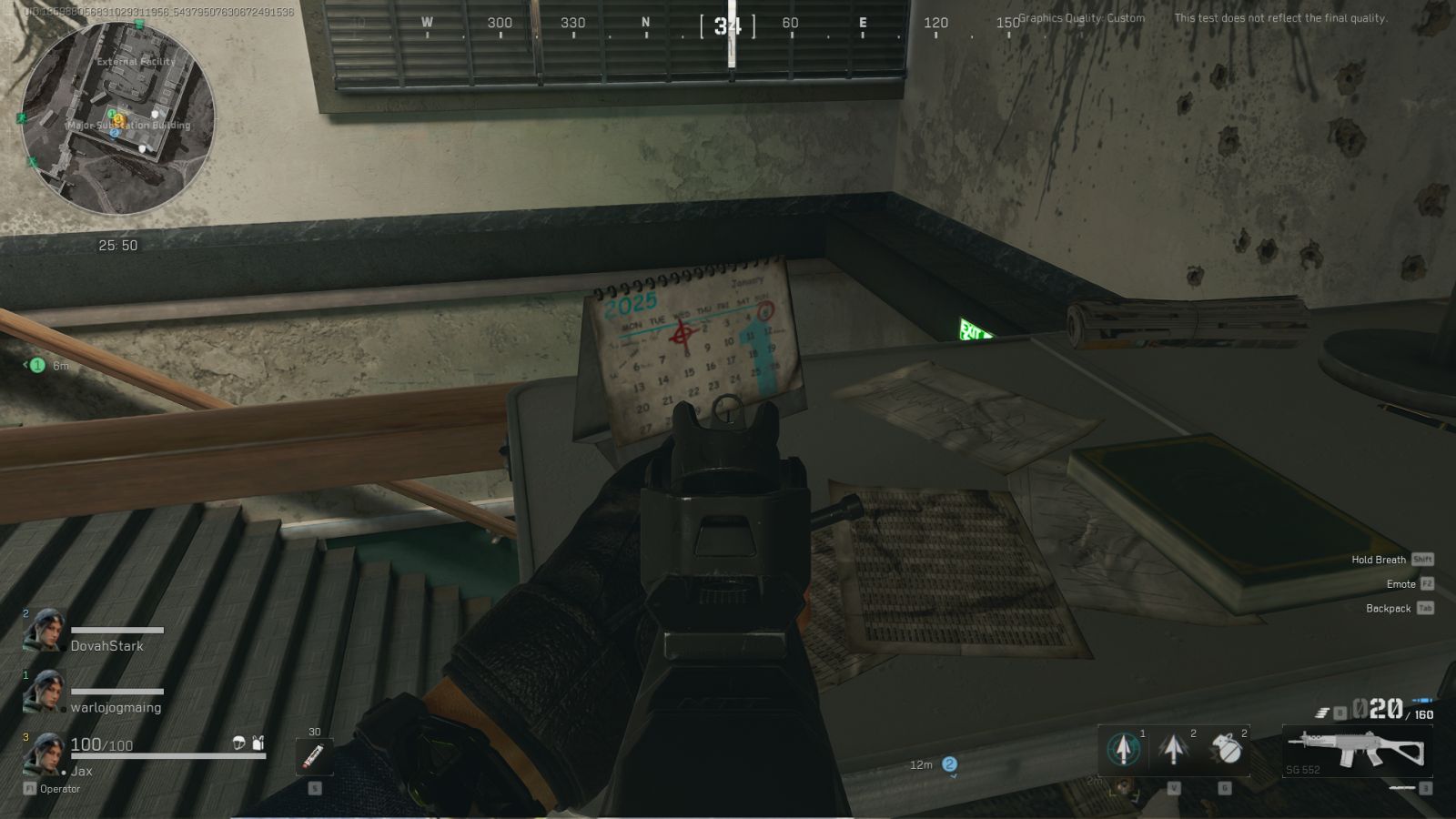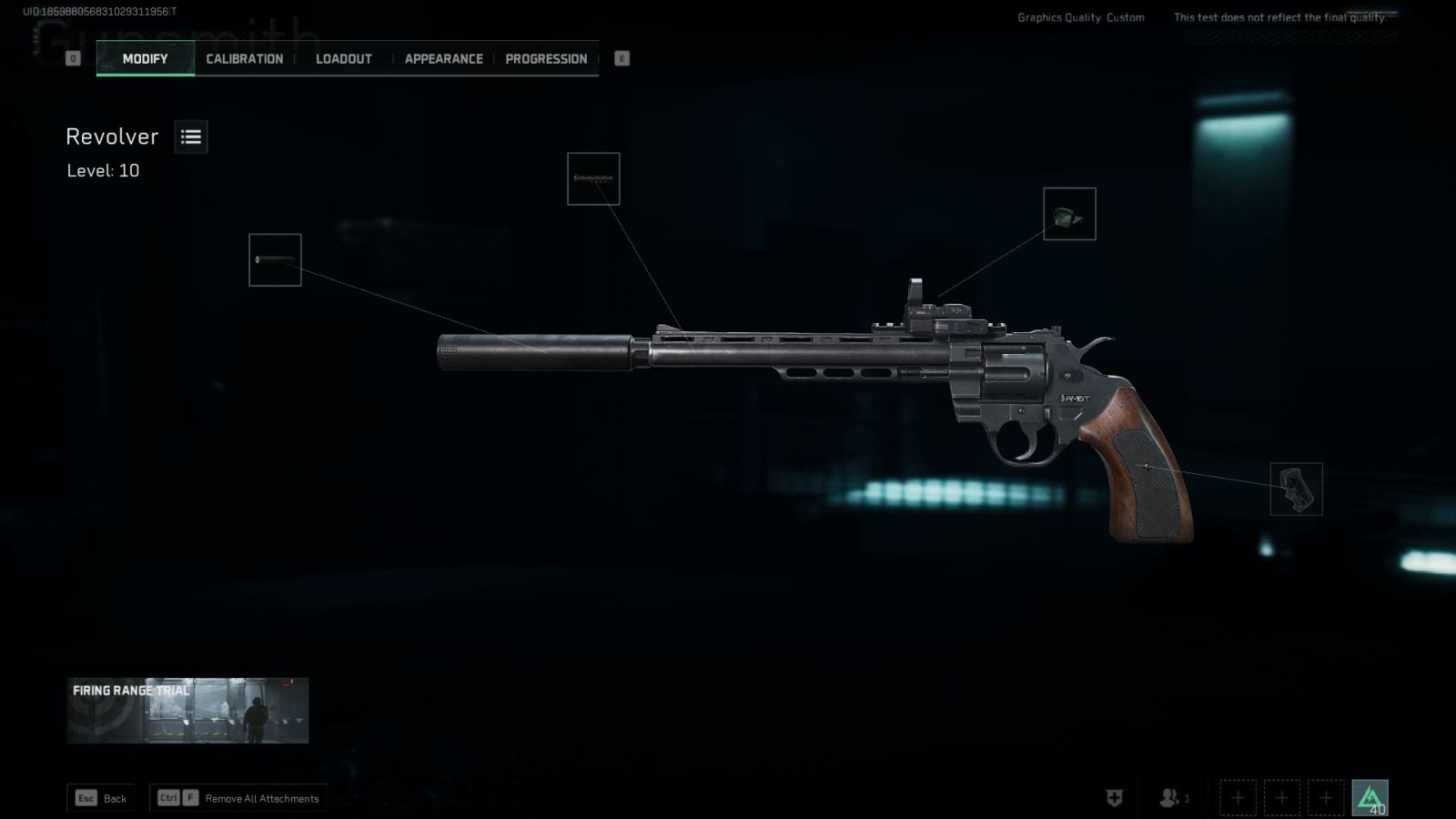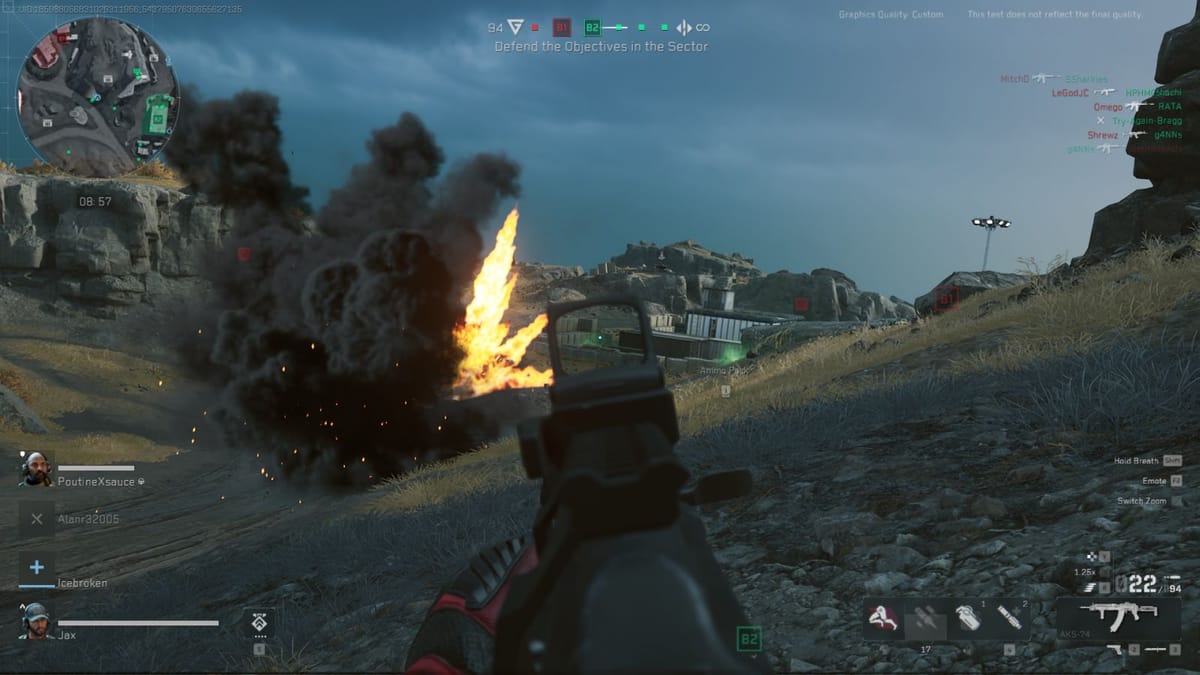
Recently, I played the closed alpha for Delta Force, the upcoming FPS developed by Team Jade, and I can firmly say that it has a strong base to build off of with a lot of potential. I know that its status as a live service hero shooter might turn some people away, but it’s got strong gunplay, game modes, and careful integration of heroes. I believe it has what it takes to be a strong contender with other FPS greats. There was a lot I liked in the alpha, and there were some problems that needed to be critiqued, so let’s get into it.
Delta Force has two main categories of play at the time of writing, Havoc Warfare and Tactical Turmoil. These two play very differently, as Havoc Warfare is a collection of classic arcadey-style game modes whereas Tactical Turmoil is a standalone extraction shooter. The three Havoc Warfare modes currently in the game are A/D, where you take or defend a set of sectors–think breakthrough from Battlefield; Capture, where you kill enemies and attack and hold multiple points across a larger map in order to accumulate victory points; and Flash, basically a small-scale version of Capture.
There are currently two maps for Havoc Warfare, Ascension and Cracked. Although I never played the original Delta Force games, it’s my understanding that the latter of the two is a remake of a prior installment’s map. It’s really nice to see the developers going back and looking for inspiration in the previous titles. The map takes place in a desert, starting with attackers making their way through the outskirts, into a military outpost, and slowly pushing into the town area to take over a warehouse and a courtyard. Overall, it has a pretty strong flow, although I do wish there was a little more cover on the wide-open streets, as this game has a fast TTK. More cover would allow both attackers and defenders to get more creative with their flanks.
The other map, Ascension, is considerably larger than Cracked. The first point has attackers pulling off a D-Day-style beach landing and pushing their way up the rocky terrain while under fire from coastal artillery. The first capture point is situated on low ground, allowing the attackers to either face it head-on from the beaches or climb around a nearby cliff to pick off the defenders and provide overwatch for their teammates. As they proceed, they’ll capture two small facilities separated by a hill with a tunnel through it, then take the ziplines up a mountain to assault another set of dual points, both of which are heavily fortified. Finally, the two teams will fight over a multi-layered spire platform. It’s a sprawling map, with plenty of environmental diversity and a stormy atmosphere–a really nice touch.
My sole complaint with Ascension applies to Cracked too: the map borders are too small. You’ll get the conventional “return to the fight” message if you press too far into enemy territory, but the problem is that in some places, enemy territory is only about 65 meters from the capture point. A little beyond that and enemy snipers have border-protected hills to camp on. This severely limits flanking routes and gives attackers an advantage in the first two objectives. When I spoke to the level designer, Percy, he said that the attacker’s advantage on the first two points was to keep the game moving.
Further spicing up the gameplay in Havoc Warfare are vehicles and support call-ins. For vehicles, there are small ATVs, armored cars, IFVs, and tanks on land. Currently, the only air vehicle is an attack helicopter. Tanks are incredibly powerful–maybe a little too powerful–as they come equipped with a strong main cannon and they can repair themselves with the press of a button. In addition, pretty much every land vehicle comes with some sort of accurate rapid-fire gun that makes mincemeat of anyone who gets in their way. Dotted across the maps are stations that repair and reload vehicles, so there’s pretty much no limit to where they can effectively attack. Take advantage of the game’s destructive elements and blow holes through buildings to help your teammates push and flank.
Support call-ins add spectacular pomp and awe to the match. Every player can rack up points by getting kills and playing the objective, which can then be spent on call-ins like vehicles or air strikes. While it’s helpful to be able to plop down a vehicle to help your team, most players will be saving their points for ordinance. There are two types of explosives to rain down upon your enemies, a bombardment and a guided missile. The former is less expensive, but less accurate and deals less damage, so it’s use is mostly for softening an area up before a push. On the other hand, the guided missile is very pricey, yet immensely powerful. I’ve wiped out the majority of the enemy team with one well-placed guided missile multiple times. It’s perfect for busting a well-defended point wide-open in the final minutes of the match.
The points players accumulate are individual, meaning a teammate can’t call anything in using the points you earned. That being said, due to the sheer cost of the all-powerful guided missile, only the top players will be able to call it in at the end of a match. They’re usually spammed one after the other, as there’s a cap on how many explosives can be dropped at one time.
The extraction shooter game mode, Tactical Turmoil, doesn’t have devastating call-ins or massive battles, but instead offers a more refined tactical experience. Players select their weapons, armor, and supplies, repel via helicopter into the map, collect whatever loot they can, and extract unharmed. That’s the goal, anyway. If you die, you’ll lose all of your hard-earned gear, but that’s just how extraction shooters go. Throw in high-value loot areas and some AI opponents running around the place and you have the recipe for a pretty good time… or a bad time if you get beamed by someone crouching behind a dumpster.
In Tactical Turmoil, every player has their own black site that serves as their home base. It’s here where items and gear can be bought and sold at auction after a successful extraction or to prepare for the next one. There are also black site upgrades, which offer players persistent progress that might help bring over more casual players to this extraction shooter experience. Some of the upgrades include a gym that increases your stamina, a shooting range to practice recoil control, and a stash to increase how much loot you can store.
Now that we’ve covered the game modes, it’s time to talk about the operators, who are the unique heroes available to players. First off, there are four classes to choose from: assault, engineer, support, and recon. For the first operator of the assault class, we have D-Wolf, who has an exoskeleton that grants him a speed boost for a time. Getting kills while this boost is active prolongs the duration and heals him. That ability alone is incredibly strong in the right hands, and I held off entire enemy pushes in the alpha using it. He also comes equipped with a triple blaster that fires three grenades in a short burst. Its damage is okay and its blast radius is mediocre, but its range is impressive. I use it to either pressure enemies to back off or as a probing tool, looking for hit markers as an indication of if there are enemies around the blast radius. He also comes with a smoke grenade, which I love to see, as it forces teammates to consider smoking while pushing. On top of that, he has a passive slide ability which he can activate by crouching while sprinting. Overall, he’s the go-to operator for pushing the enemy lines.
Next, we have another assault operator, Vyron, who specializes in quick shock attacks. His first ability is the Crouching Tiger, an airburst round that knocks down enemies in a medium radius. His next ability is a dash that propels him forward, and its cooldown is pretty much reset with every kill. The problem with the dash is that it’s too slow with too short of a range to be useful outside of CQC, and he has to re-ADS every time he does it. In a game with such a fast TTK, that’s a death sentence. His next ability is a magnetic bomb that sticks to whatever he throws it at and detonates automatically after a few seconds. Chaining his kit together with good positioning and timing is an effective way to take out vehicles, as the bomb deals a good chunk of damage to them; however, it’s often a kamikaze mission. His passive grants him reduced fall damage and a speed boost whenever he activates his abilities. He’s a bit of an oddball, but he’s still interesting, and I would love to see his dash ability get a little love in the full release so he can live up to his full potential. Weaving in and out of cover, disabling vehicles, and being an overall menace to camper nests is his forte. To complement their kits and aggressive play style, assaults have access to one of the following: a healing syringe, an anti-personnel or anti-gadget grenade launcher, or an armor plate.
Let’s discuss Stinger, he’s currently the only support operator in the game, but he excels at his job. Taking the role of healer, his first ability is the Hive-Tech Pistol, which is a mix between the lock-on pistol from Titanfall 2 and the Syrette pistol from Battlefield 2042. That’s to say, it locks onto allies and fires healing bullets, and Stinger can even use it on himself. His next ability is a drone that flies forward, deploying smoke, and you can influence the direction it goes by lightly steering it to the left or right. The next device is a smoke grenade that turns into a healing cloud if you shoot it with the hive-tech pistol. It feels amazing to be able to combo abilities together in a move that brings out the strongest parts of both. His passive lets him quickly revive allies. As a support, he can choose from a med crate or ammo crate for his gadget.
Moving on to the first of two engineer operators, we have Shepard. He’s the standard engineer type, with strengths in repairing and destroying vehicles. However, he also has potent anti-personnel abilities. His first ability is a sonic paralysis drone that both reduces the fire rate and blurs the vision of anyone who’s caught in its AOE. In addition, it interferes with enemy recon devices. The drone can either be sent forward or set to sentry mode, where it will hover above you. The next ability is the sonic trap, a mine that damages and slows enemies caught in its blast radius. It can be stuck to any surface, and if you have a line of sight on it, you can activate it remotely. His next ability is his frag grenade, nothing fancy here, just a good ole’ reliable hand grenade. His passive lets him take less damage from explosions, which is handy for facing down tanks and IFVs. Naturally, as an engineer, he has numerous anti-vehicle launchers, two of which are lock-on for land and air respectively, and one of which is dumb fire. He can also choose an anti-gadget grenade launcher or an active protection system to protect his team from explosives.
The other engineer operator is Uluru. His first ability is a T.V. cluster missile launcher that’s perfect for firing from defensive positions. It’s effective against infantry and vehicles alike, and more importantly, he can still equip another rocket launcher for his class gadget. His next ability is an instant cover grenade that creates a barrier where it’s thrown. It breaks apart if it’s under enough pressure, but for the most part, it’s pretty solid. The third ability is an incendiary grenade that can burn through the barrier. It’s a fun strategy to bait out enemies by giving them a strong piece of cover to hide behind, then lighting it up. His passive trait makes him resistant to slowing effects, which is decent.
The last operator class to cover is recon. Starting with Luna, she’s really good at area denial and spotting enemies. Her first ability is the detection arrow, which detects anyone who moves in its path. It’s a full-on wall-hack ability that can be combo’d with smoke to devastating effect. Her next ability is called volt arrow, it’s an electric AOE that deals damage over time. At one point, I clambered onto a roof on Cracked, blocked off an alleyway below with an electric arrow, and killed the guy from above while he was stuck. It can be toggled to bounce or activate where it lands. Her next ability is a basic frag grenade, and her trait detects any enemies she hits. Overall, she’s great at knowing where enemies are, where they’re going, and preventing them from getting there.
The final operator, Hackclaw, also belongs to the recon class. She’s the Tactical Turmoil game mode operator. It might seem a little presumptuous to call her that, but she seems purpose-built for it. First off, she’s unlocked by completing Tactical Turmoil missions. Secondly, her kit is geared directly towards stealth and ambush tactics. Her first class ability is the Signal Decoder, which scans for enemies and allows you to track them via lines that represent their paths. Her next class ability is the flash drone, which is a drone that flashbangs enemies it gets close to; combine this with her Signal Decoder and it will follow their path. Her final ability is the Data Knife, which disables enemy electronic devices… and people. Yeah, it’s a one-shot throwing knife with two charges, need I say more? There’s also her trait, Silent Step, which makes walking and crouching faster and quieter. Overall, she’s optimal for setting up ambushes with your team in Tactical Turmoil, and she’s a valid solo-play operator for any game mode. Recons have access to the laser indicator gadget, which is supposed to mark enemies on the mini-map, but it didn’t work for me. The other gadget is the respawn beacon, which is incredibly potent at keeping pushes alive by letting teammates spawn on it, and its coloring often fits into the surrounding terrain’s color palette quite well. I’ve seen whole squads of teammates run past an enemy respawn beacon right next to them.
The developers made sure that every operator is useful in their own way, especially in Tactical Turmoil. For example, some barriers in the extraction mode can only be dismantled by an engineer, and Stinger’s revive overcomes the health debuff penalty for getting downed. Operators with grenades can use them to great effect against enemies with exposed limbs and protective vests. I was originally skeptical as to how a tactical hero shooter would work, but now I can say for certainty that it’s quite compelling.
On a side note, during my time playing on the first Tactical Turmoil dam map, I spent a while exploring. In one of the buildings, I found a calendar displaying January 2025, and on it were two highlighted dates. Wednesday, the first day of the new year had a circle with a cross, and Sunday the 5th was circled as well. Could this be a possible nod to a release date? It’s possible, as it fits with the Q1 2025 timetable.
Of course, what’s an FPS game without good gunplay and weapon selection? Delta Force does very well in this category, as each class has a variety of weapons available for them to unlock. The drip feed is well-paced, and I always felt like I had a new gun to play with. The customization is incredibly deep, as you can choose from a variety of sights, stocks, grips, mags, and more. Attachments affect the recoil, hip-fire accuracy, and handling of the gun, and they all have their own models. Beyond that, you can calibrate individual attachments, changing their weight limit, thickness, and placement along a sliding scale to milk every last drop of relevant stat. Be warned, calibrating your attachments will give drawbacks in some other areas equal to the benefits gained. For example, increasing the weight limit of a stock will increase recoil control but subtract from aiming stability while breathing.
The design philosophy clearly emphasizes drawbacks over restrictions, and it leads to a refreshing level of freedom with gunsmithing. At one point I put a long barrel and a silencer on a revolver and declared it “The Biggest Iron”. Was it practical? Not in the slightest. Was it fun to create and joke around with? Absolutely. There’s also a firing range to test your gun builds. The transition between tinkering with your gun and entering the range is seamless and makes it easy to dial in your weapon to suit your exact playstyle.
The shooting itself is quite satisfying. Recoil is punchy, yet intuitive and smooth. Gun handling like swapping weapons and reloading is well animated and sounds appropriately clanky, and kills with snipers make a bassy “vwoom” sound. Most other gun kills let out a clear, sharp “vree” noise. This game really gets the dopamine a-flowin’.
Before I wrap up, I have to address the elephant in the room, the bot situation. There’s plenty of discourse around the number of bots in the game right now, and I myself have experienced games blatantly full of bots. I spoke to the developers about the topic. Percy, the level designer informed me about the reasoning for including bots, saying “We have A.I.s for now because the number of players is not enough to support matchmaking in the alpha,” and “We don’t want players to waste too much time for matching.”
Another priority for the alpha was to give players time to get their bearings, as Percy also said “The bots are for the lower-skill players to learn more from the bot matches”
He further reassured me that on release there will be, “Fewer bots to no bots if you’re in a higher level match.” For now, it seems that if Delta Force releases with a healthy player base, then players don’t need to worry about facing off against A.I. opponents.
The developers revealed a few other interesting details, such as the possible addition of a “commander mode” similar to that of Battlefield 4 to “increase communication between teammates.”
Additionally, they stated, “In the future, you will be able to customize your guns during the match of Havoc Warfare.”
Finally, I asked for a comment on the calendar I found on the Tactical Turmoil map, but they wouldn’t budge, so there’s no official answer. Still, their refusal to comment on it speaks for itself.
All in all, I’m quite excited for the game’s full release. Delta Force does a lot right, from the large-scale classic game modes of Havoc Warfare to the intense experience of tactical turmoil, and the operators interwoven well into the game’s fabric. It’s clear that the developers at Team Jade have a clear vision and are working meticulously to execute on it.

